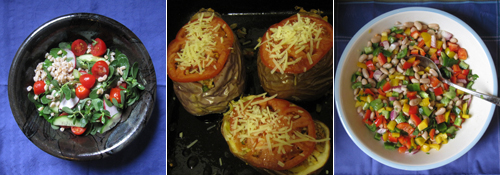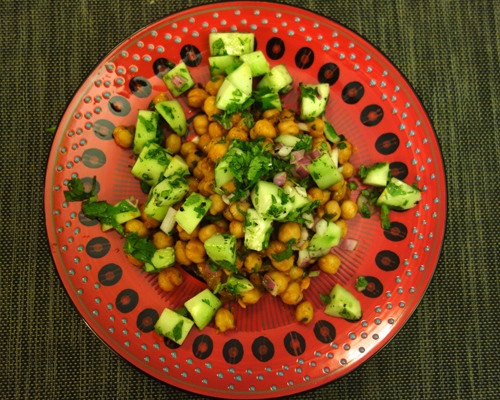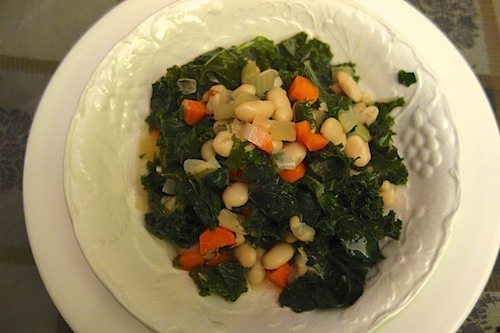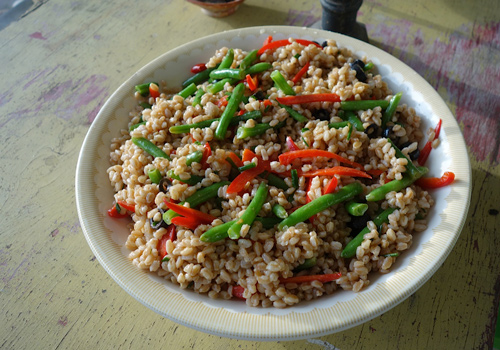- Home
- Features
- Business
- Active
- Sports
- Shop
Featuredhealthy eatingmediterranean diet
 Basia HellwigSeptember 28, 20103 Mins read59 Views
Basia HellwigSeptember 28, 20103 Mins read59 Views
Eat Less Meat: Sure, But How Do You Get There from Here?
Share

BY EATING THE TRADITIONAL MEDITERRANEAN WAY, of course. By now Mediterraneanista’s loyal readers know that the Mediterranean diet includes a lot less meat than many of us are used to. And we know it makes sense, this eating less meat, for all sorts of good health and environmental reasons. But what is less? And how do you get there from here?
I remember as a business editor one of the many managerial concepts that floated across my desk was “chunking”—a strategy for managing a big project by, well, breaking it into chunks. If you’re an enthusiastic meat eater who’s interested in moving in the direction of a more Mediterranean diet, “chunking” may be a concept worth reviving. Let’s face it, many of us have eating habits that were formed in households where the dinner menu was Meat Plus (you fill in the blanks, but it often involved potatoes). We may need a little aide-mémoire to adopt a different way.

So here are some chunks to get you closer to the Mediterranean way:
Meatless Monday, which I’ve written about here before, is a great example of a manageable chunk. You have six days to plan for one day of meatless eating. Since standard dietary recommendations call for no more than 18 oz. of meat a week, Meatless Monday works out perfectly. Three ounces a day, which is a portion or serving size, plus one day off. And you get the week off to a good start. (The Meatless Monday organization reports that “studies suggest that we are more likely to maintain behaviors begun on Monday throughout the week.”)
Learn to cook two or three meatless main dishes you love, so they become second nature, just the way the Meat-Plus concept once was. Most important, this flips the idea around from denying yourself meat to treating yourself to a different kind of delicious meal—a joy-of-eating concept Mediterraneanista likes a lot. I didn’t start out with the goal of “eating less meat.” I just became seduced by the adventure of discovering just how delicious and satisfying the traditional Mediterranean way of eating could be. Roast vegetables is one of my simplest favorites. If you enter “vegetarian” in the Mediterraneanista search box at right, you’ll find others.
Be a vegetarian before dinner. Over the long term, this is much easier to keep top of mind than tracking your meat intake meal by meal. (I don’t know about you, but I find the whole tracking thing gets tiresome pretty quickly, although it can be useful as a way to learn exactly what you are eating or spending now.) Cookbook author and New York Times columnist Mark Bittman has written about how a mostly-vegan until dinner approach works for him in Food Matters: A Guide to Conscious Eating. He’s never doctrinaire about it, and makes it seem doable and adaptable.
Chef Mario Batali, who offers vegetarian dishes for Meatless Monday at all his restaurants, recently surprised a few people when he said he was working on a vegetarian cookbook and is now “vegetarian all day until dinner, and I try to eat no meat whatsoever on Monday and Tuesday.” Perhaps that helps explain why there’s 45 pounds less of him—and counting. Actually, his cookbook Molto Gusto: Easy Italian Cooking very much reflects a traditional Mediterranean table and includes a lot of fabulous meatless dishes in it already.
Make meat a secondary ingredient on your plate, not the centerpiece. That helps the portion size make a lot more sense. Because, yep, as I wrote yesterday, 3-4 oz. is actually the suggested serving of meat to be eaten at a meal. That’s a piece about the size of a pack of cards, a useful way to visualize it, I find, when I’m eyeballing meat purchases for a family dinner or dinner party. Some of you are probably thinking, 3 ounces of meat could look pretty lonely in the middle of a plate. True, if it’s at the center of that plate. Instead, think of a stir-fry, for instance, that’s three parts vegetables, one part meat. Or a whole-grain rice pilaf for four in which ½ pound of ground lamb adds fabulous meat flavor. Last week, I made a Turkish eggplant dish (more about that soon) that used ½ pound of lamb in the stuffing for four eggplants. Delicious!
Use legumes—beans, lentils—and grains like farro to give some of the textural and nutritional satisfaction of meat—they’re high in fiber and protein. Throw them in soup or salads or stews. I’ll write soon about how to make this super easy. I’m branching out from my favorite farro salad to learn more ways of incorporating this incredibly tasty grain into more meals, and I’ll keep you posted on that, too.
Bon appetit—Mediterranean style!
Related Articles
Featuredhealthy eatingmediterranean dietUncategorized  Basia HellwigJuly 3, 2013
Basia HellwigJuly 3, 2013
RECIPE: Chickpea Curry and Cucumber
THIS WARM SALAD—chickpeas with cucumbers as a garnish—makes such a tasty...
Featuredhealthy eatingmediterranean dietUncategorized  Basia HellwigApril 29, 2013
Basia HellwigApril 29, 2013
Meatless Monday Recipe: Kale and White Bean Stew
I BECAME A KALE FAN JUST A FEW YEARS AGO when my...
Featuredhealthy eatingmediterranean dietUncategorized  Basia HellwigApril 22, 2013
Basia HellwigApril 22, 2013
RECIPE: Farro Salad with Red Peppers and Beans
I GOT A JUMPSTART ON MEATLESS MONDAY this weekend when my friend made...






Leave a comment